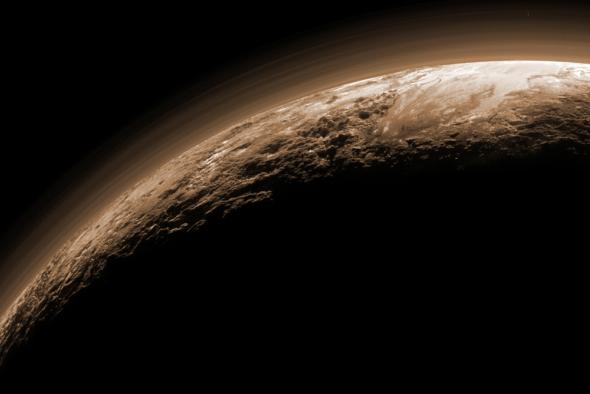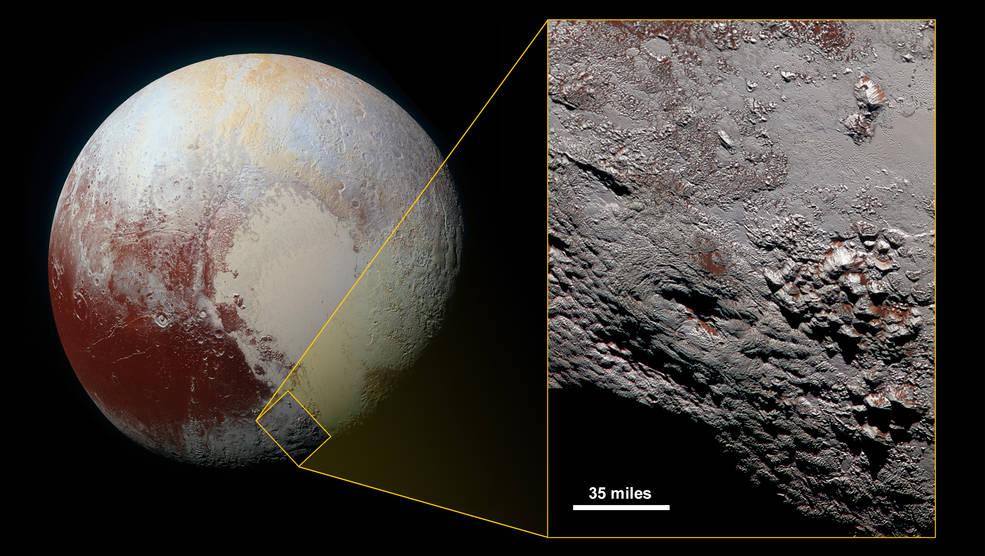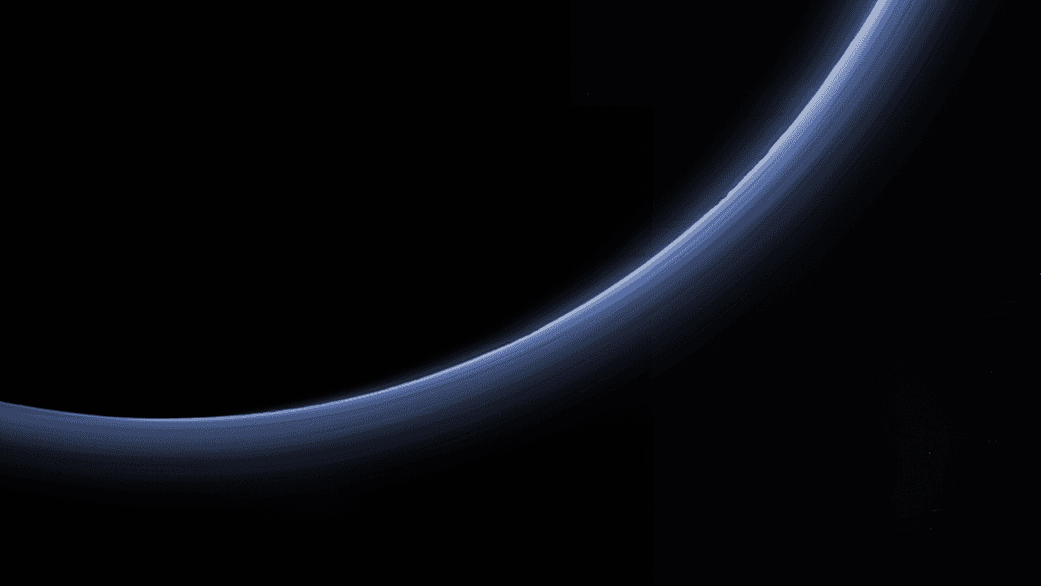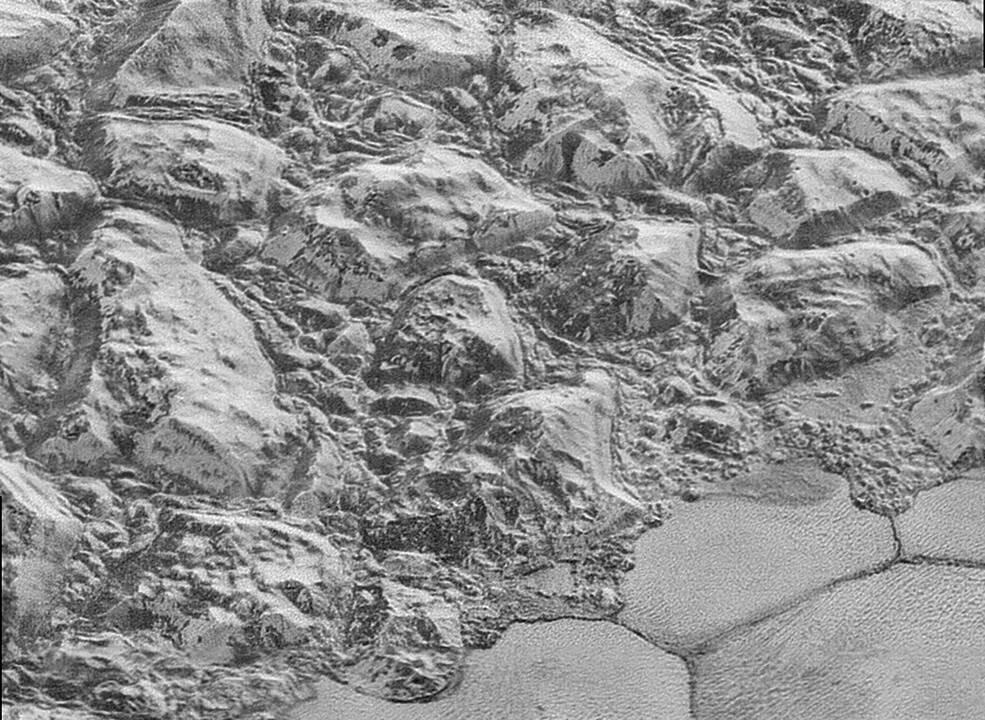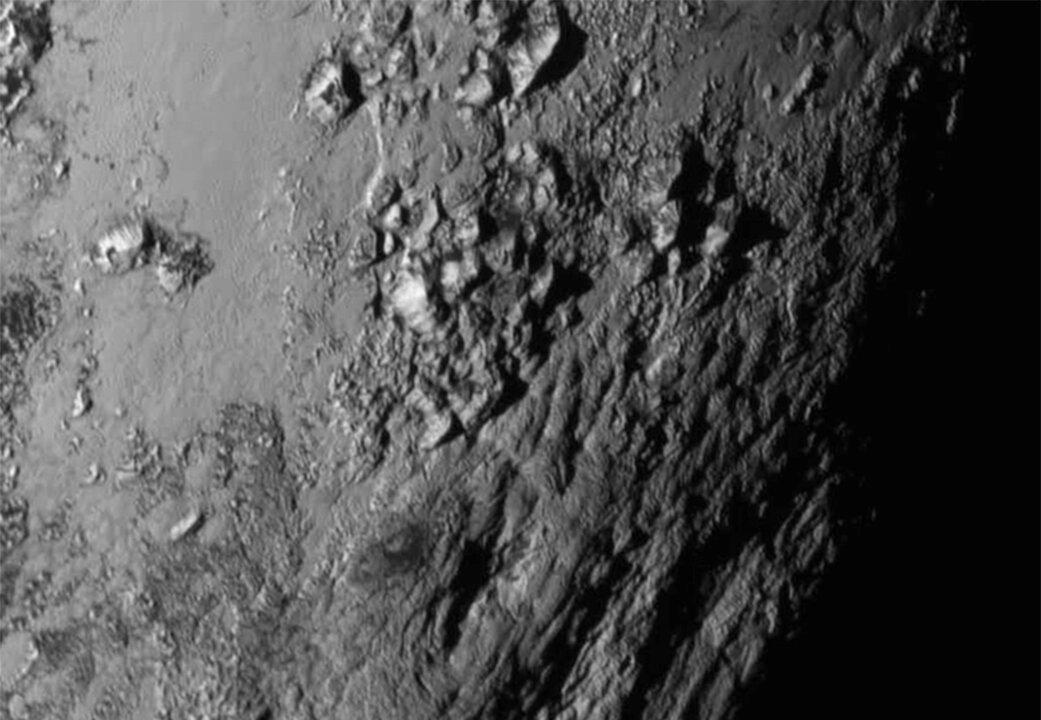Focus
Pluto
Scientists Say There May Be a Hidden Ocean on Pluto (Video)
Is there an ocean under Pluto’s surface? A new study suggests that there may indeed be one beneath the dwarf planet’s surface.
|
Photos: Never Before Seen Closeup of Pluto’s Surface Captured by Spacecraft
See a brief tour of the planet’s hummocky cratered uplands, rocky terrains, and cellular nitrogen ice plains, among other features.
|
Magic Professor: Magicians Tap Into What It Means to Be Human
Magic depends on understanding an audience’s psychology.
|
Picture of Pluto Further Refined by Months of New Horizons Data
When the New Horizons spacecraft made its flyby of Pluto on July 14, 2015, there was worldwide celebration that we’d finally gotten our first detailed look at this completely new type of planet in the outer reaches of our solar system. But for those of us on the New Horizons science team, that day and those first images were only the beginning.
|
There Are Floating Hills of Ice in the ‘Heart’ of Pluto
http://www.nasa.gov/feature/pluto-s-mysterious-floating-hills
http://www.nasa.gov/feature/nasa-s-new-horizons-a-heart-from-pluto-as-flyby-begins/
|
NASA Scientists Spot Mysterious ‘Floating Hills’ on Pluto (Video)
Pluto just never ceases to fascinate. NASA scientists recently discovered the dwarf planet is home to hills that float and move about.
|
Pluto Contains Lot More Water Ice Than Previously Thought, According to NASA (Video)
New data gathered from the New Horizons spacecraft suggests that Pluto has a far more abundant reserve of water ice than previously believed.
|
There Might Be an Ice Volcano on Pluto
In some of the photos, it appears that Pluto might be home to cryovolcanoes, better known as ice volcanoes, which spew up water and ammonia instead of lava.
|
New Horizons: Space Probe Captures Image Showing Pluto’s Atmosphere, NASA Says
In July, the New Horizons became the first spacecraft to fly by Pluto, snapping photos of the planet along the way. Processing pictures taken in outer space is a complex task, and NASA is still releasing new ones from the journey.
|
New Horizons Space Probe Brings First Set of High-Resolution Images of Pluto
NASA’s New Horizons space probe has sent back the first set of high-resolution images of Pluto ever seen.
|
Pluto Revisited: The Case for Reinstating Its Planetary Status
The New Horizons space probe voyage to Pluto has helped to create new interest in learning about our solar system. And it has refocused attention on the issue of Pluto’s demotion from planetary status. I hope to convince you, in this article, that this unfortunate decision should be reversed.
|
Images of Pluto’s Moon Charon Show Huge Fractures and Hints of Icy ‘Lava Flows’
Since the New Horizons probe flew through the Pluto system on July 14, most of the attention has been on Pluto itself.
|
Pluto Scientists Were Masters of the Long Haul – Here’s How People Stick With Extremely Long-Term Goals
It took almost a decade for NASA’s New Horizons spacecraft to navigate its way across the solar system to start taking and transmitting dramatic closeup photos of the dwarf planet Pluto.
|
Mysterious ‘Mountain Sitting in a Moat’ Spotted on Pluto’s Moon (Video)
NASA scientists are intrigued about a strange feature on Pluto’s largest moon Charon that one member has described as “a large mountain sitting in a moat.”
|
‘Beautiful Eye Candy’: Frozen Plains in Pluto’s Heart
Vast frozen plains exist next door to Pluto’s big, rugged mountains sculpted of ice, scientists said Friday, three days after humanity’s first-ever flyby of the dwarf planet.
|
‘Something Wonderful’: First Close-Up Pictures of Pluto
Scientists have released the first up-close images ever of Pluto and its big moon Charon. And they say they’re amazed.
|
Scientists Say There May Be a Hidden Ocean on Pluto (Video)
Is there an ocean under Pluto’s surface? A new study suggests that there may indeed be one beneath the dwarf planet’s surface.
|
Photos: Never Before Seen Closeup of Pluto’s Surface Captured by Spacecraft
See a brief tour of the planet’s hummocky cratered uplands, rocky terrains, and cellular nitrogen ice plains, among other features.
|
Magic Professor: Magicians Tap Into What It Means to Be Human
Magic depends on understanding an audience’s psychology.
|
Picture of Pluto Further Refined by Months of New Horizons Data
When the New Horizons spacecraft made its flyby of Pluto on July 14, 2015, there was worldwide celebration that we’d finally gotten our first detailed look at this completely new type of planet in the outer reaches of our solar system. But for those of us on the New Horizons science team, that day and those first images were only the beginning.
|
There Are Floating Hills of Ice in the ‘Heart’ of Pluto
http://www.nasa.gov/feature/pluto-s-mysterious-floating-hills
http://www.nasa.gov/feature/nasa-s-new-horizons-a-heart-from-pluto-as-flyby-begins/
|
NASA Scientists Spot Mysterious ‘Floating Hills’ on Pluto (Video)
Pluto just never ceases to fascinate. NASA scientists recently discovered the dwarf planet is home to hills that float and move about.
|
Pluto Contains Lot More Water Ice Than Previously Thought, According to NASA (Video)
New data gathered from the New Horizons spacecraft suggests that Pluto has a far more abundant reserve of water ice than previously believed.
|
There Might Be an Ice Volcano on Pluto
In some of the photos, it appears that Pluto might be home to cryovolcanoes, better known as ice volcanoes, which spew up water and ammonia instead of lava.
|
New Horizons: Space Probe Captures Image Showing Pluto’s Atmosphere, NASA Says
In July, the New Horizons became the first spacecraft to fly by Pluto, snapping photos of the planet along the way. Processing pictures taken in outer space is a complex task, and NASA is still releasing new ones from the journey.
|
New Horizons Space Probe Brings First Set of High-Resolution Images of Pluto
NASA’s New Horizons space probe has sent back the first set of high-resolution images of Pluto ever seen.
|
Pluto Revisited: The Case for Reinstating Its Planetary Status
The New Horizons space probe voyage to Pluto has helped to create new interest in learning about our solar system. And it has refocused attention on the issue of Pluto’s demotion from planetary status. I hope to convince you, in this article, that this unfortunate decision should be reversed.
|
Images of Pluto’s Moon Charon Show Huge Fractures and Hints of Icy ‘Lava Flows’
Since the New Horizons probe flew through the Pluto system on July 14, most of the attention has been on Pluto itself.
|
Pluto Scientists Were Masters of the Long Haul – Here’s How People Stick With Extremely Long-Term Goals
It took almost a decade for NASA’s New Horizons spacecraft to navigate its way across the solar system to start taking and transmitting dramatic closeup photos of the dwarf planet Pluto.
|
Mysterious ‘Mountain Sitting in a Moat’ Spotted on Pluto’s Moon (Video)
NASA scientists are intrigued about a strange feature on Pluto’s largest moon Charon that one member has described as “a large mountain sitting in a moat.”
|
‘Beautiful Eye Candy’: Frozen Plains in Pluto’s Heart
Vast frozen plains exist next door to Pluto’s big, rugged mountains sculpted of ice, scientists said Friday, three days after humanity’s first-ever flyby of the dwarf planet.
|
‘Something Wonderful’: First Close-Up Pictures of Pluto
Scientists have released the first up-close images ever of Pluto and its big moon Charon. And they say they’re amazed.
|










